Cultural Blend - Architecture of Thailand
The architecture of Thailand is a brilliant reflection of its history and culture- political, religious and sociological that adds to its existing beauty of majestic beaches, vibrant nightlife, a multiplicity of cuisines and fascinating culture. With the advent of different dynasties, the kingdom witnessed an amalgamation of cultural diversity influenced profoundly by its neighbouring South-East Asian states and the West which brought to the country bright and vibrant ornamentation that formed a part of the décor of the architectural magnificence in the former kingdom. Thai architecture, thus, reflects traditional designs from its neighbouring Asian countries, gradually evolving into a more contemporary style invented by the country itself. It has been divided into conventional which includes religious and secular, and modern Thai architecture.Types Of Thai Architecture
1. Traditional Thai ArchitectureReligious Structures
Built and patronised by the royal families of Thailand, the architecture of the kingdom would display extensive ornamentation and intricate details into the work. Most of the temples built were dedicated to either Buddha or the various Hindu Gods. Different symbols used in the designs are representations of the specific culture and religion, as well as the belief system of the devotees.
Secular Structures
These include the constructions which are not related to any religion and include mostly traditional Thai houses depicting its architecture. Thai architecture has evolved throughout the years. However, the basic idea continues to be the same. It would depend upon the materials used and above all, superstitious beliefs. It was vital to have a guardian spirit house along with the residence to keep the evil away.
2. Modern Thai Architecture
In the present era, Thailand has one of the most captivating constructions in Asia. With soaring skyscrapers and huge multi-storied malls, Thailand has entwined modernity and tradition in its establishment.
Given below are a few of the famous sites in Thailand that are emblematic and brilliantly showcase the architecture of Thailand.
1. Prasat Hin Phimai
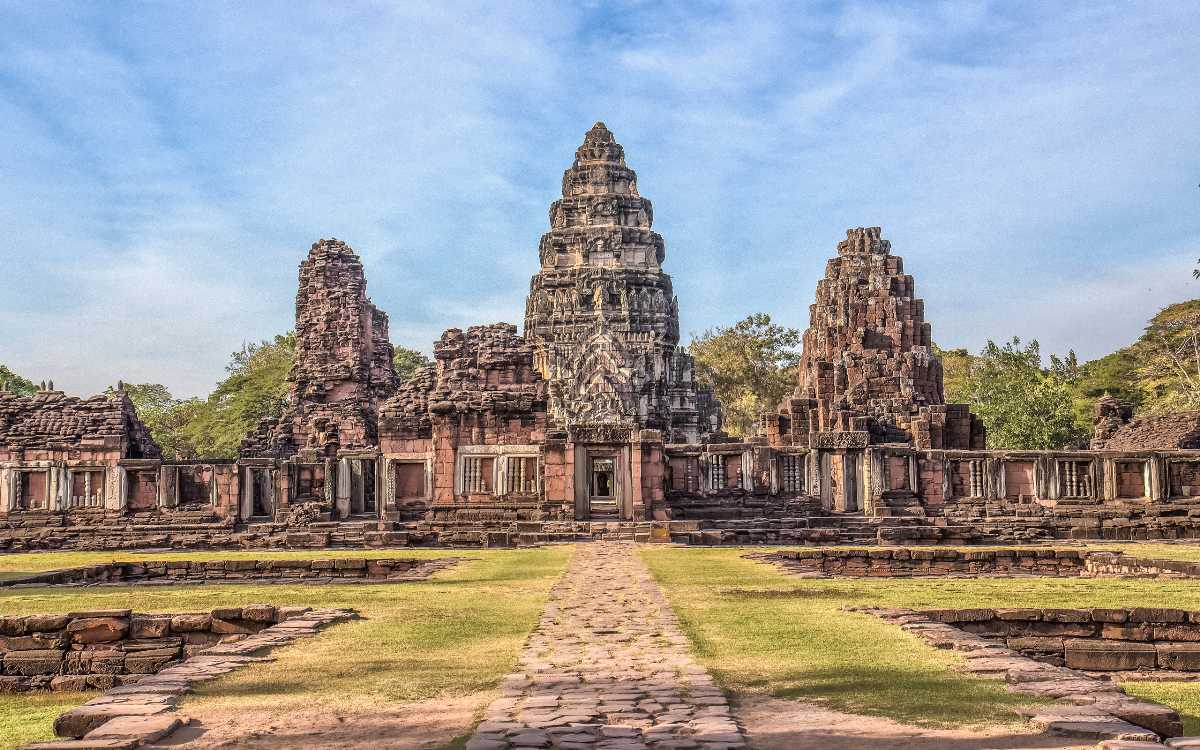
Build between 11th-12th century, Phimai Historical Park features some of the most exquisite Khmer architecture of Thailand and is the largest among all Khmer temples. These are Buddhist temples, facing South-East direction, towards Angkor in Cambodia.
Temple Symbols
Being constructed primarily by Hindu rulers, the temple walls depict the stories from Ramayana and Mahabharata along with those from the life of Budhha. These are precisely the unique features of the temple that it forges a link between religious identities- a Buddhist temple built by Hindu rulers.
Highlights
The temple town is a classic example of the architecture of the Khmer empire and depicts the importance of the city during the period it was built.
Location: Phimai, Nakhon Ratchasima province
Timing: 9:00 AM to 4:00 PM
Entry fee: THB 30
Structure of Architecture: Traditional
2. Wat Rong Khun
_20190704151929.jpg)
History
Still a work in progress, the Wat Rong Khun was designed and funded by Chalermchai Kositpipat, a Thai artist who made it his lifetime project to restore the crumbling 20th-century building.
Striking Features
The Wat Rong Khun, otherwise known as The White Temple, is rightly named because of its white colour. The temple reflects the sunlight, creating a sparkle because of the use of glasses in the plaster.
Architecture and Symbols
Although known as a temple, it is more of a privately-owned exhibit, influenced by Buddhist architecture. While the colour, white, represents the purity of the Budhha, the glass symbolises his teachings, Dhamma. Visitors are required to walk through a bridge surrounded by a cluster of desperate hands, depicting hell. Heaven, as is believed by humankind, lies only when one crosses hell. The interior of the building is ornamented with a variety of sculptures, both traditional and contemporary, that displays the sheer brilliance of the artist. The extravagance does not come to an end for the temple is still a work in progress.
Location: Off Highway 1, Phahonyothin road, 15 kilometres South West of Chiang Rai town
Timing: 8:00 AM to 6:00 PM
Entry fee: THB 50
Structure of Architecture: Traditional
3. Wat Samphran Temple
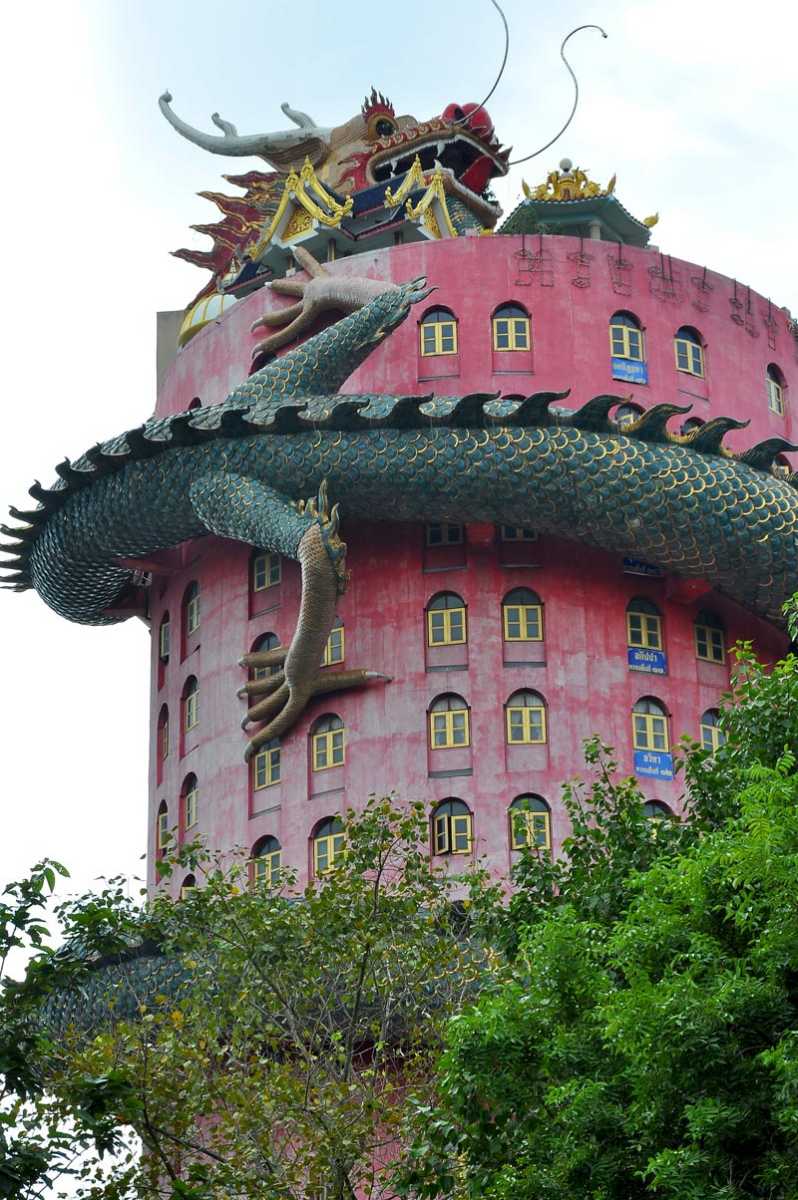
Architecture
While the Buddhist temple in Amphoe Sam Phran, 40 km from Bangkok, is not a known tourist attraction, it is an impressive work of humankind, spiralled by a massive dragon across its seventeen stories. The dragon is hollow, allowing visitors to walk through it, although many sections are in ruins.
Highlights
The interior of the temple comprises of magnificent shrines and statues, one of which is a stunning bronze statue of Budhha.
Unknown History
However, details such as the architect, the year of construction etc. about this marvel of architecture remain anonymous, to this day.
Free entry
Location: Khlong Mai, Sam Phran District, Nakhon Pathom, Thailand
Timing: 9:00 AM to 1:00 PM
Structure of Architecture: Traditional
4. Wat Arun Ratchawararam
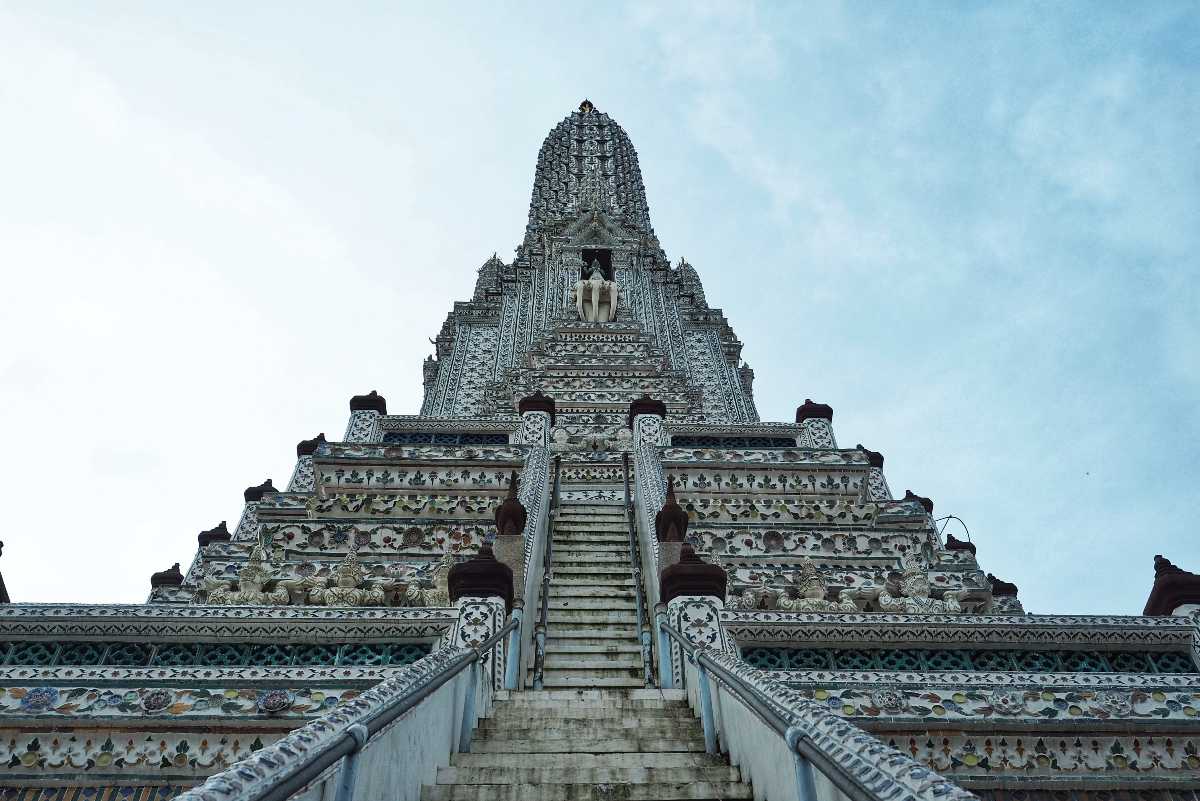
History
Wat Arun Ratchawararam, also known as Temple of Dawn, Wat Chaeng or Wat Arun has been named after the Hindu God, Aruna or the God of Dawn. The recent construction, for most parts, was restored and rebuilt by King Rama II and King Rama IV of the Chakri dynasty of Thailand. The view looks radiant, especially during sunrise and sunset. The temple was constructed in the seventeenth century, during the Ayutthaya Period.
Architecture and Symbols
The temple represents Mount Meru, which, according to Buddhist cosmology, is the centre of the universe. The grand pagoda, standing tall at 70 metres, is decorated intricately with coloured glass and Chinese porcelain and surrounded by four smaller pagodas, which in turn are decorated with seashells. The temple shrines the Emerald Buddha and is heavily influenced by Buddhist architecture.
Highlights
Situated on the banks of the Chao Phraya River, the temple reflects off sunlight with pearly iridescence.
Location: 158 Thanon Wang Doem, Khwaeng Wat Arun, Khet Bangkok Yai, Krung Thep Maha Nakhon, Thailand
Timing: 8:00 AM to 5:30 PM
Entry fee: THB 100
Structure of Architecture: Traditional
5. Wat Phra Kaew
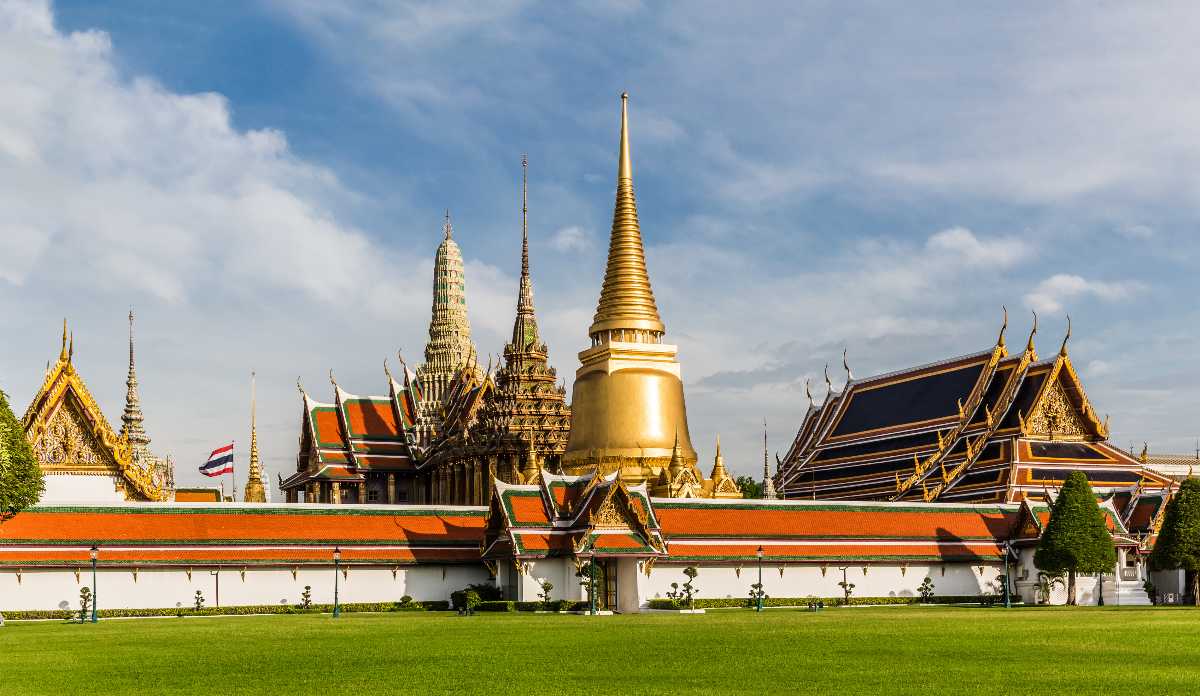
History
Wat Phra Kaew officially called Wat Phra Si Rattana Sarsadaram and locally known as the Temple of the Emerald Buddha is revered as the most sacred Buddhist site in Thailand. The Budhha, sitting in a meditating posture, is about 66 centimetre in height and carved from single jade stone. It was enshrined at the Wat Phra Kaew in 1782 during the reign of King Rama I.
Architecture
The Wat Phra Kaew consists of several buildings that have gone through various stages of architectural experimentation of the Rattanakosin style or the old Bangkok style. The Indian architecture has influenced the entire structure in the sense that it has similar ‘yakshis’ guarding the temple gates as well as floral motifs. Frescos displaying the life of the Buddha have been incorporated in later constructions over the years while the original work of orange and green tiles, marble and mosaic pillars have been retained.
Location: Na Phra Lan Rd, Khwaeng Phra Borom Maha Ratchawang, Khet Phra Nakhon, Krung Thep Maha Nakhon, Thailand
Timings: 8:30 AM to 3:30 PM
Entry Fee: THB 500
Structure of Architecture: Traditional
6. The Grand Palace
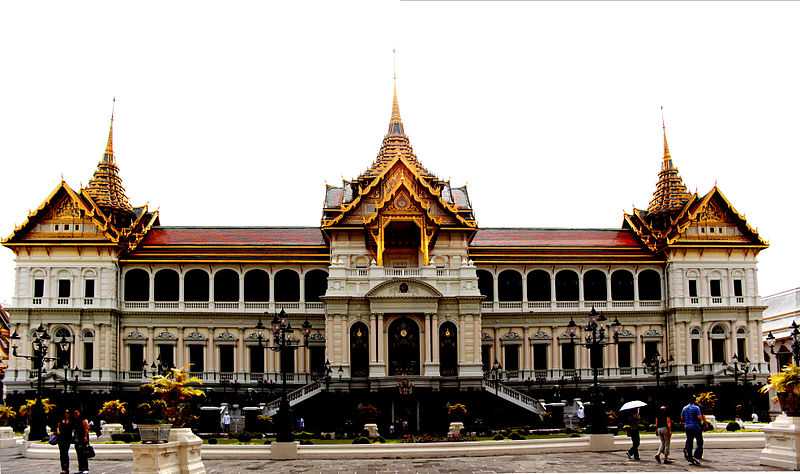
History
The Grand Palace is a collection of buildings which were the official residence of the Kings of Thailand, constructed by the first king of the Chakri Dynasty, King Phutthayotfa Chulalok or Rama I in 1785.
Architectural Highlights
Due to its periodical reconstruction over the years, the palace features architectural styles from different decades. The royal residence is a classic example of the dynastic architecture in Thailand, and is open to visitors, being one of the major tourist attractions in the country. Interestingly, it is still used for certain royal ceremonies every year.
Location: Phra Nakhon, Bangkok, Thailand.
Timings: 8.30 A.M to 3.30 P.M.
Entry Fee: THB 500
Structure of Architecture: Traditional
Contemporary Thai Landmarks
7. Elephant Tower
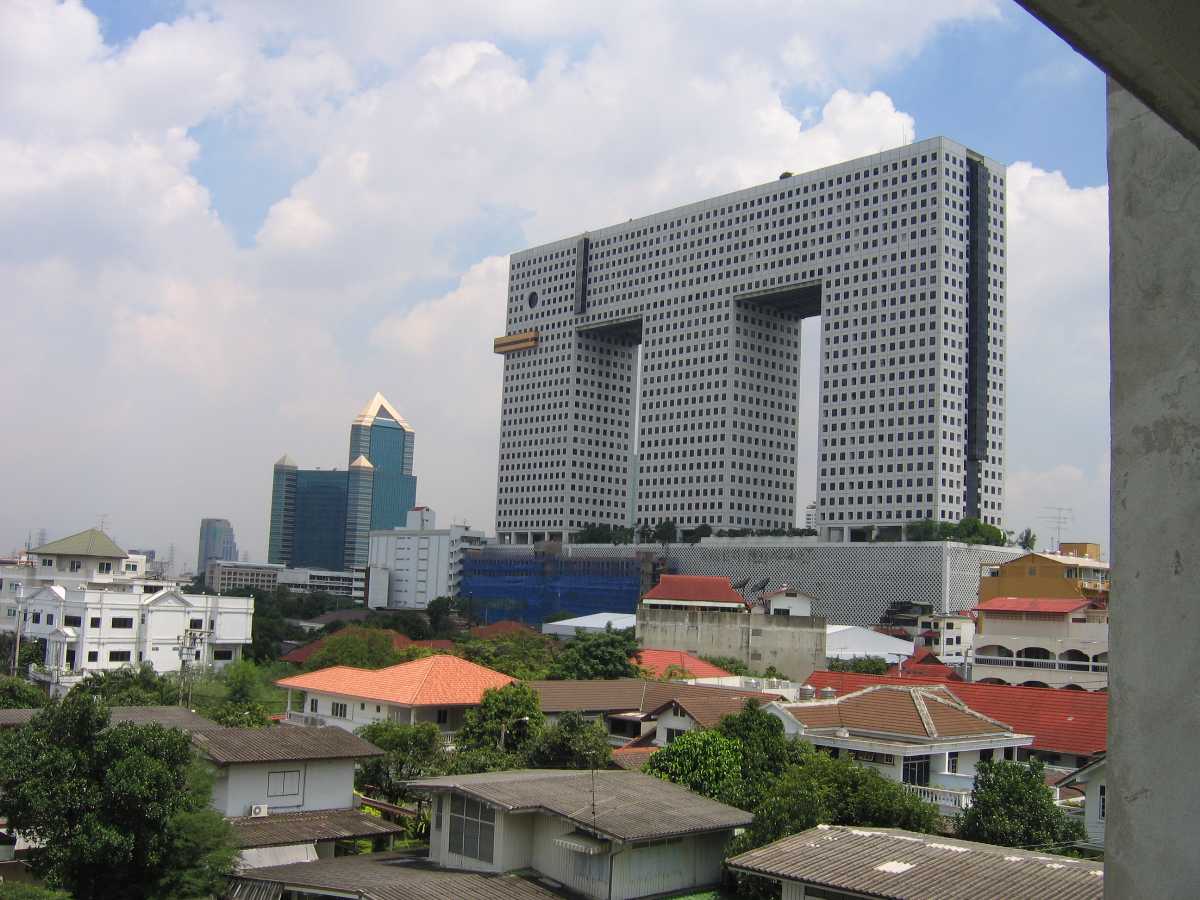
History
The Elephant Tower, inaugurated in 1997 and influenced by the country’s national animal, was ranked 4th by CNN as ‘20th World’s Iconic Skyscrapers’ in February 2011.
Modern Elements
A 102-metres tall structure with 32 floors, the Elephant Tower was designed by a collaboration between Ong-at Satrabhandhu and Dr Arun Chaisaree. It is a collection of offices, residential suites, bank, shopping centres etc.
Architecture and Symbols
While the three towers of the building, which are Tower A, B and C make up the shape of the body of the elephant, the right edge displays the eyes and the tusk. The building has come to symbolise the post-modern architecture and the technological aspect of the millennial era.
Location: Chatuchak, Bangkok, Thailand
Structure of Architecture: Modern
8. Robot Building
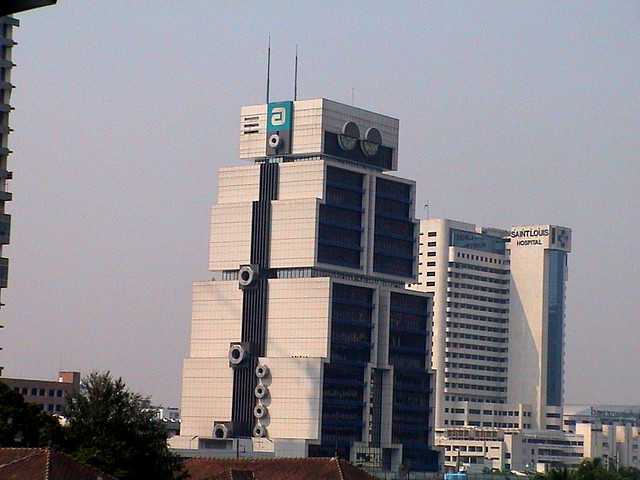
History
Known as Bank of Asia Tower, the Robot Building houses the headquarters of United Overseas Bank. It completed in 1987, with Sumet Jumsai as its chief architect.
Modern Elements
The prime motto of the design was to reflect the growing influence of computer technology on the banking industry, representing one of the last examples of modernist structures in the city. As the name suggests, it typically resembles a robot, with two antennae on the roof and eyes made of reflective glass windows in the front of the building.
Architecture
It is an icon of Thai architecture, having been recognised as one of the ‘fifty seminal buildings of the twentieth century’ by Los Angeles’ Museum of Contemporary Art.
Location: 191 South Sathorn Road, Bangkok, Thailand.
Structure of Architecture: Modern
9. King Power MahaNakhon
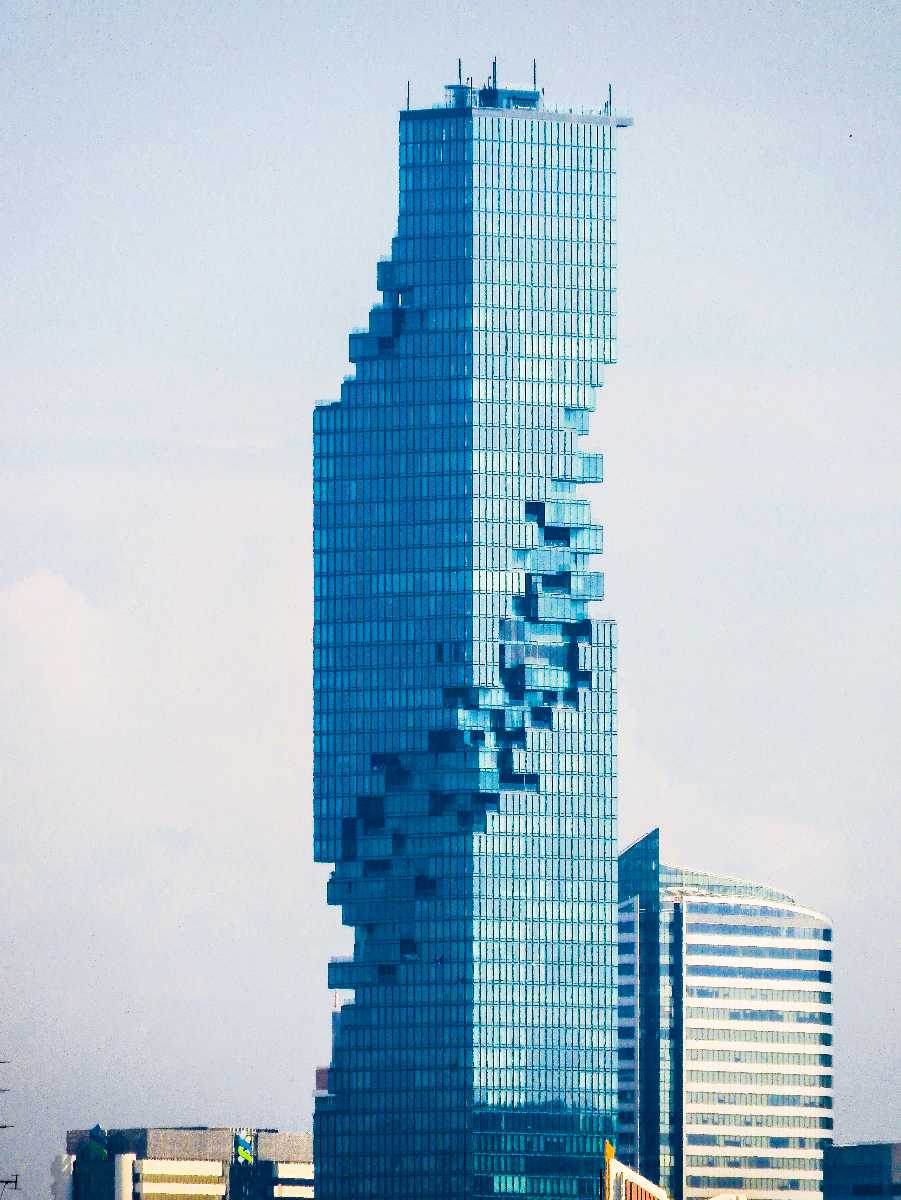
History
MahaNakhon, the tallest building in Thailand until 2018, was designed by Ole Scheeren and was opened in 2016 with 78 floors and a height of 314 metres.
Modern Elements
With many residences, hotel and retail, giving the appearance of a glass-curtained square wrapped within a spiral of cut cuboids, MahaNakhon is an extraordinarily designed architectural wonder. It seems to be dissolving downwards towards its base.
Architectural Symbols
MahaNakhon refers to ‘Great Metropolis’ in Thai, and the name suits the structure that seems to integrate with the city as though moving between the sky and the ground.
Location: 114 Naradhiwat Rajanagarindra Rd, Khwaeng Silom, Khet Bang Rak, Krung Thep Maha Nakhon, Thailand
Structure of Architecture: Modern
10. Bangkok University’s Landmark Complex
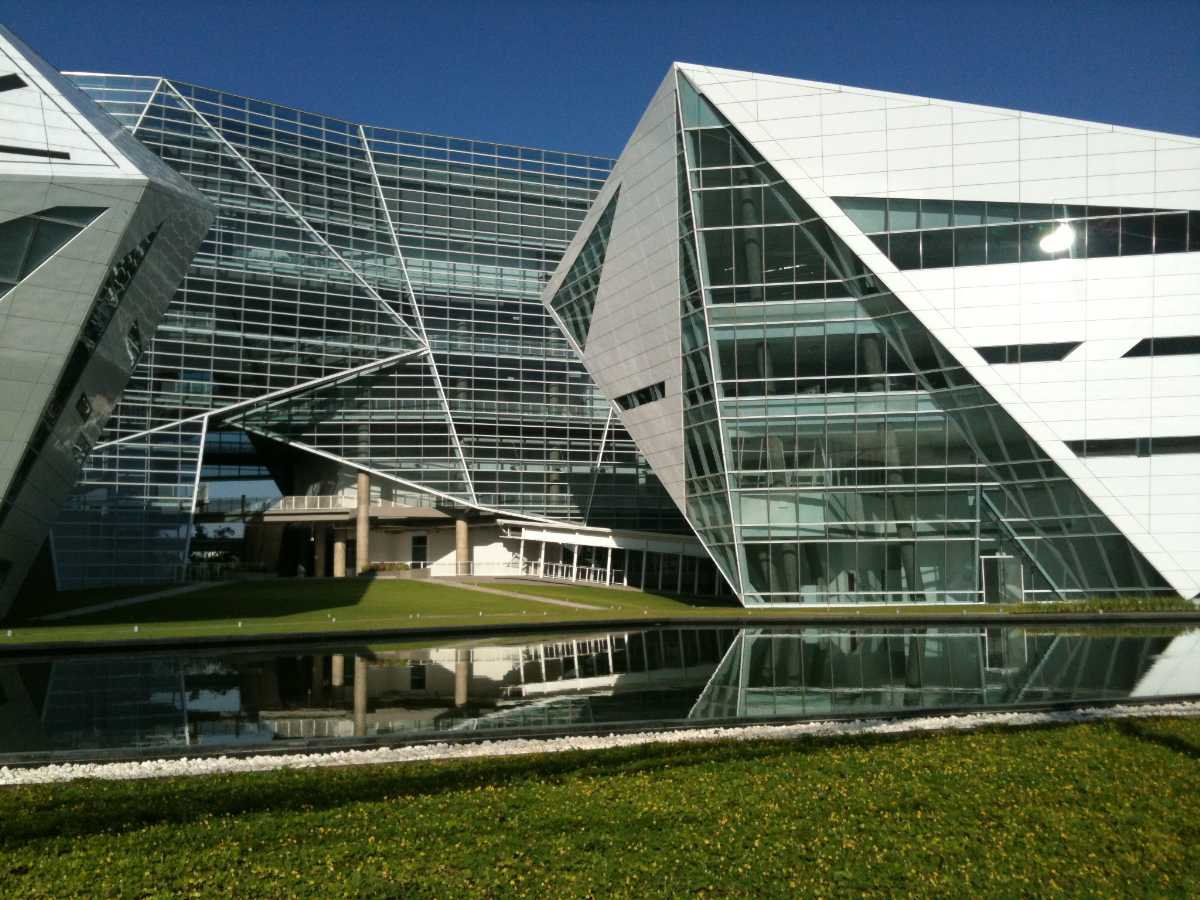
History
The BU Landmark, completed in 2010, had been constructed by Architects 49 Limited as an expansion of the already available facilities in the university.
Architectural Symbols
The structure resembles the shape of a diamond, keeping in mind the symbol of the university. The pond in front of the building creates a natural prism, reflecting off the light and creating a radiant hue.
Modern Elements
Although it forms a part of the educational institution, the structure is a prime example of the architectural development that Thailand has sprung into in recent decades.
Location: Rangsit, Thailand
Structure of Architecture: Modern
Despite such innovative designs towards modernised architecture, Thailand is a blend of culture that attempts to preserve its heritage through its architectural styles. Massive restoration works are being undertaken by the government as well as private groups to preserve the existing practices. The architecture of Thailand is a wonder that must be visited whenever you are in the country. A brief knowledge about the background would be helpful whenever you are in the place to appreciate it better.
